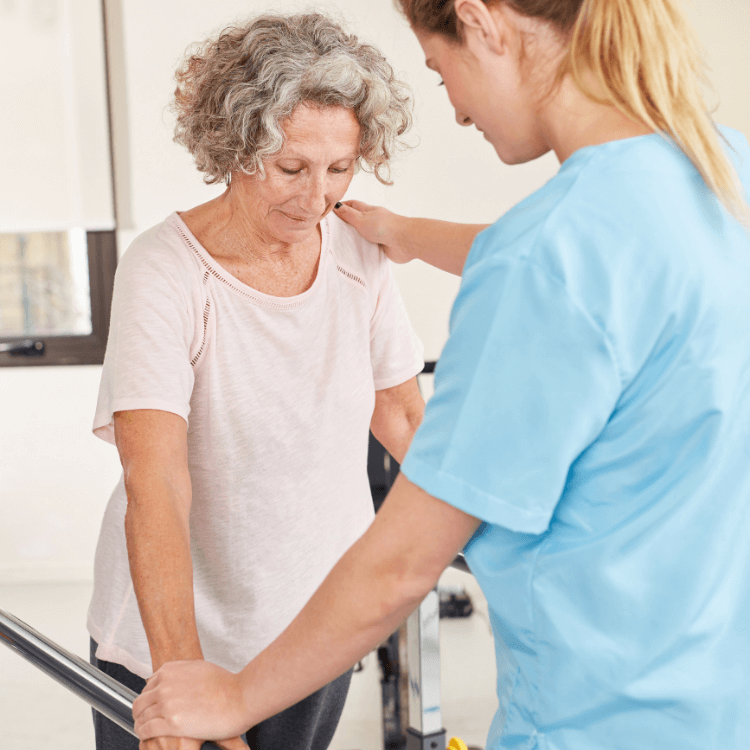Patient rehabilitation is the process of restoring an individual’s physical, mental and social abilities after an illness or injury. The goal of rehabilitating a patient is to get them back to their pre-injury or illness level of functioning and strive to make their recovery process as speedy and painless as possible.
In this blog post, we will provide you with an overview of the meaning and benefits of rehabilitation and discuss best practices for rehabilitating patients so that they can have a successful recovery.
What is rehabilitation and what are its benefits for patients?
Rehabilitation is the process of restoring a person’s maximum level of functioning and independence following an illness or injury. It can include physical, occupational, and speech therapies.
Rehabilitation helps patients regain strength and mobility, learn new skills, and re-establish important personal relationships. It can also reduce the need for long-term healthcare, preventing strain on caregivers and health services. Overall, rehabilitation provides many benefits for patients and can help them return to normal life.
What are some common challenges of rehabilitation?
There are many challenges faced by patients during rehabilitation. One of the most common is difficulty adjusting to a new routine. It can be difficult to find time for rehabilitation and patients must learn to balance their new recovery goals with existing obligations.
A serious illness or injury may pose the challenge of prolonged pain or soreness. This can be difficult to deal with and may discourage patients from completing rehabilitation exercises due to the discomfort it causes. This may result in feelings of powerlessness and can even have lasting effects on self-esteem.
Another common challenge is boredom or frustration. Repetition of rehabilitation exercises or activities can be tedious, and it’s easy to become discouraged if you’re not seeing progress.
How can family members help with the rehabilitation process?
Rehabilitation can be a difficult process, both for the individual who is undergoing rehabilitation and for their family members. Family members can play a crucial role in aiding the recovery process by providing emotional support, being encouraging, listening to any concerns, offering hope, assisting with tasks, and serving as a source of information.
Four Stages of Rehabilitation
1. Pain Management and Rest – When you’re in pain, it’s difficult to focus on anything else. It is therefore important to get this under control before you start getting back to your usual activities. Resting helps your body focus on healing and prevents further injury from overworking yourself. Some basic principles of pain management include taking over-the-counter pain medications as prescribed to reduce inflammation and pain.
2. Early Mobilisation – When recovering from an illness or injury, it is important not to become bed ridden for too long as this can have its own associated health complications. To promote early mobilisation, start with short and easy exercises such as walking from one end of the room to another and back again, and progressing gradually to build your strength and avoid overexerting yourself. If you are struggling with mobility issues then we recommend using specialised equipment such as stand aid hoists, slings and mobile hoists to make transferring locations easier and to reduce the risk of falls or re-injury.
3. Recovering Strength – This is when slightly heavier exercise can be introduced as a way to rebuild muscle and return patients to full strength. Rehabilitation exercises can be quite repetitive, especially for very targeted injuries. Make sure exercises are fun and engaging at this stage to keep up motivation. Include family members in the rehab process whenever possible, as they can provide valuable support and help in recovering strength at a faster rate.
4. Maintenance and Prevention – The final and often overlooked phase of rehabilitation is injury prevention. Injury prevention at its core involves identifying risk factors for patients who are attending less frequent rehabilitation appointments. These new environments require balancing readjusting to daily life with the continuation of treatment to ensure a successful recovery. It is important that the primary aim at this point is preventing reinjury. This can be done through the continuation of rehabilitation sessions or aided by the use of injury prevention equipment such as a bed rail or a bath lift chair.
Final Thoughts
As you can see, rehabilitation is a long and difficult process that requires patience and diligence. If you’re currently going through this process or know someone who is, we hope this guide can help pave the way to successful recovery.




















